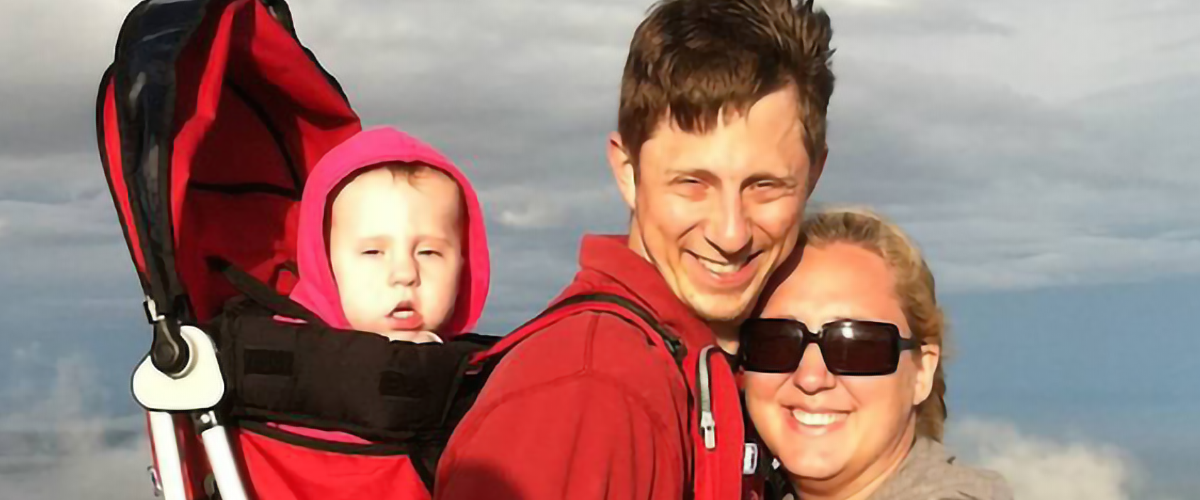Heart dysfunction is the second leading cause of death for DM patients and affects 80% of the population; yet very little is known about the molecular changes that alter the cardiac conduction system. A multi-disciplinary, international team, representing 25 different academic institutions, recently undertook a massive messenger RNA sequencing project to learn more about this. Their findings provide an important understanding of the molecular basis of cardiac dysfunction in DM and may have immediate implications for how DM patients are treated.
Using biopsy or post mortem samples from DM1 and DM2 patients, the team assessed the identity of mis-spliced genes and correlated the pattern of changes with the cardiac dysfunction seen in these patients. Considerable progress has been made in understanding the molecular events behind the skeletal muscle changes in myotonic dystrophy (DM). The CTG or CCTG expansions (“triplet repeat”) in the DNA of patients with DM1 or DM2, respectively, produce aberrant messenger RNAs that alter the expression of two proteins that regulate gene splicing, muscleblind and CUG-binding protein 1. These changes in splicing regulatory proteins, in turn, cause the mis-splicing of key skeletal muscle genes that, in turn, produce myotonia and muscle wasting.
Until now, we have had very little knowledge of these molecular level events regarding the DM heart. The altered synchronization of the heartbeat (arrhythmias) and altered heart rate (ventricular tachycardia) seen in DM are likely the result of alterations in sodium and potassium ion flux. The propagation of electrical impulses across the specialized heart muscle cells that comprise the heart’s conduction system is dependent upon the flux of sodium and potassium ions across the cardiac cell membrane. Among the DM-related splicing changes in the heart, the research team discovered that a sodium channel gene, SCN5A, was mis-spliced. Specifically, there was a switch from SCN5A messenger RNA containing the normal, adult 6B exon to the fetal 6A exon.
This finding was of particular interest since the 6A exon-containing SCN5A is known to exhibit reduced excitability when compared to the normal adult SCN5A. To establish a connection between the molecular event, the DM-related switch from adult to fetal SCN5A isoform, to cardiac dysfunction, the research team developed a mouse model expressing the fetal, rather than the adult, SCN5A isoform. Notably, these mice exhibited similar cardiac conduction system delays and arrhythmias to those characteristic of DM, thereby providing support for a causal relationship between mis-splicing of SCN5A and cardiac dysfunction.
The mis-splicing of SCN5A explains some important changes in the hearts of DM patients. Mutations in SCN5A have been linked to other cardiac diseases, and there is the potential for repurposing the therapeutic and management strategies used in those diseases to DM. Knowledge of the downstream molecular changes that are responsible for changes in heart function will yield important insights into development of novel therapies for myotonic dystrophy.
It should be recognized that this study would not have been possible without the partnership of DM patients and a large scientific team of investigators. The sharing of expertise and resources that lies behind the success of this study needs to be our continuing model for future progress in understanding and treating DM. For information on other scientific studies currently recruiting, please see the Study and Trial Resource Center.
Reference:
Splicing misregulation of SCN5A contributes to cardiac-conduction delay and heart arrhythmia in myotonic dystrophy.
Freyermuth F, Rau F, Kokunai Y, Linke T, Sellier C, Nakamori M, Kino Y, Arandel L, Jollet A, Thibault C, Philipps M, Vicaire S, Jost B, Udd B, Day JW, Duboc D, Wahbi K, Matsumura T, Fujimura H, Mochizuki H, Deryckere F, Kimura T, Nukina N, Ishiura S, Lacroix V, Campan-Fournier A, Navratil V, Chautard E, Auboeuf D, Horie M, Imoto K, Lee KY, Swanson MS, Lopez de Munain A, Inada S, Itoh H, Nakazawa K, Ashihara T, Wang E, Zimmer T, Furling D, Takahashi MP, Charlet-Berguerand N.
Nat Commun. 2016 Apr 11;7:11067. doi: 10.1038/ncomms11067.

